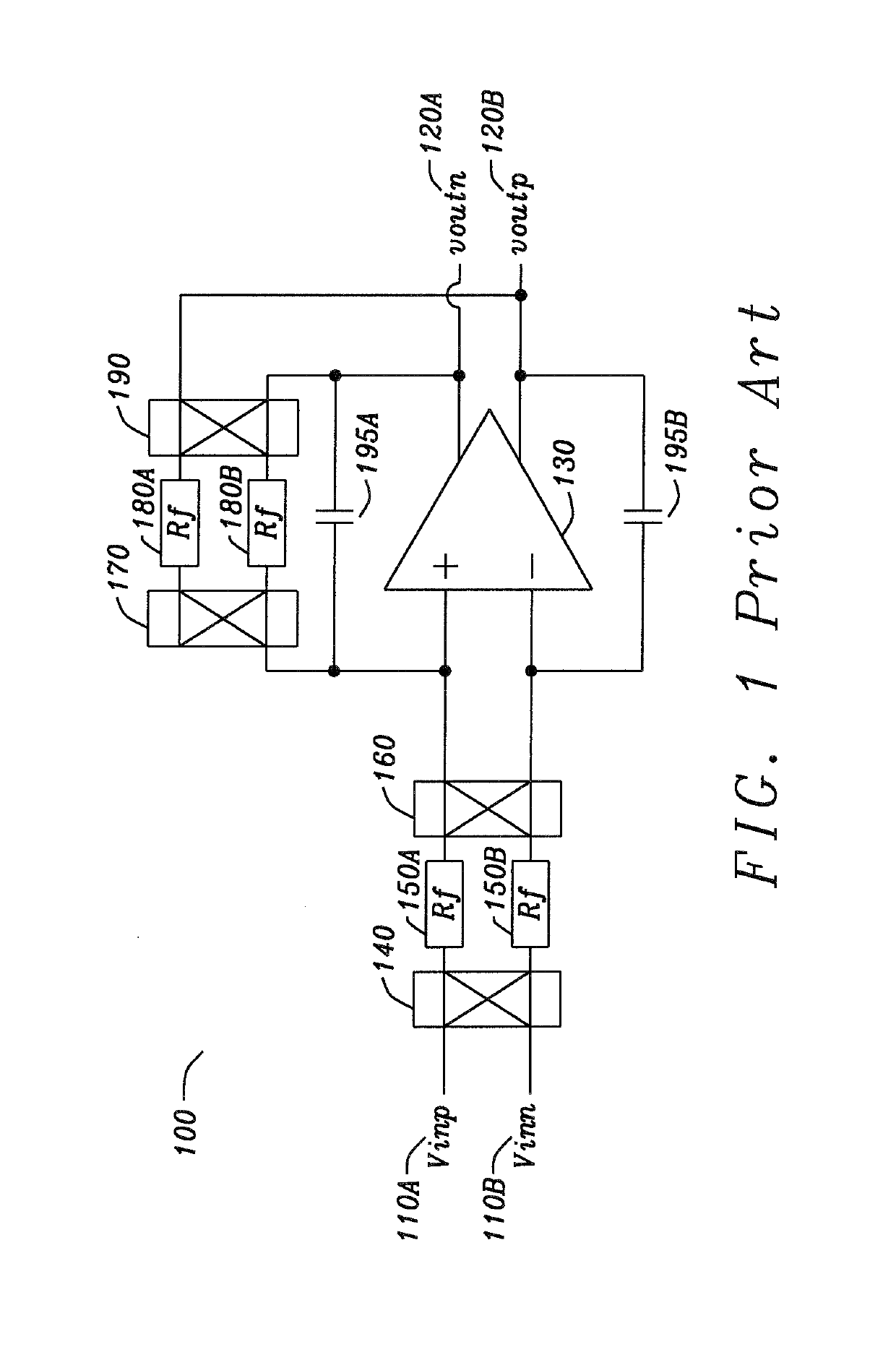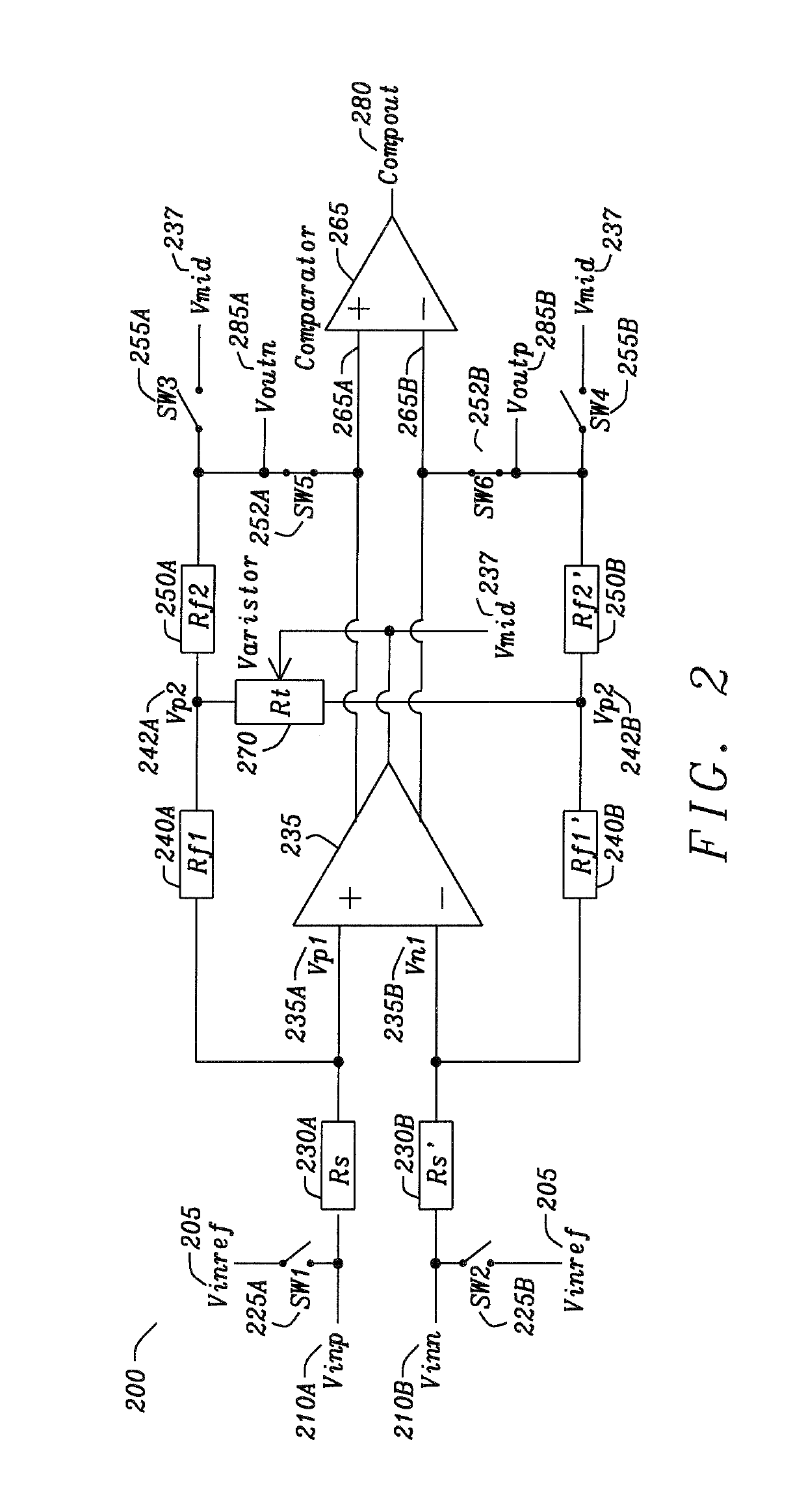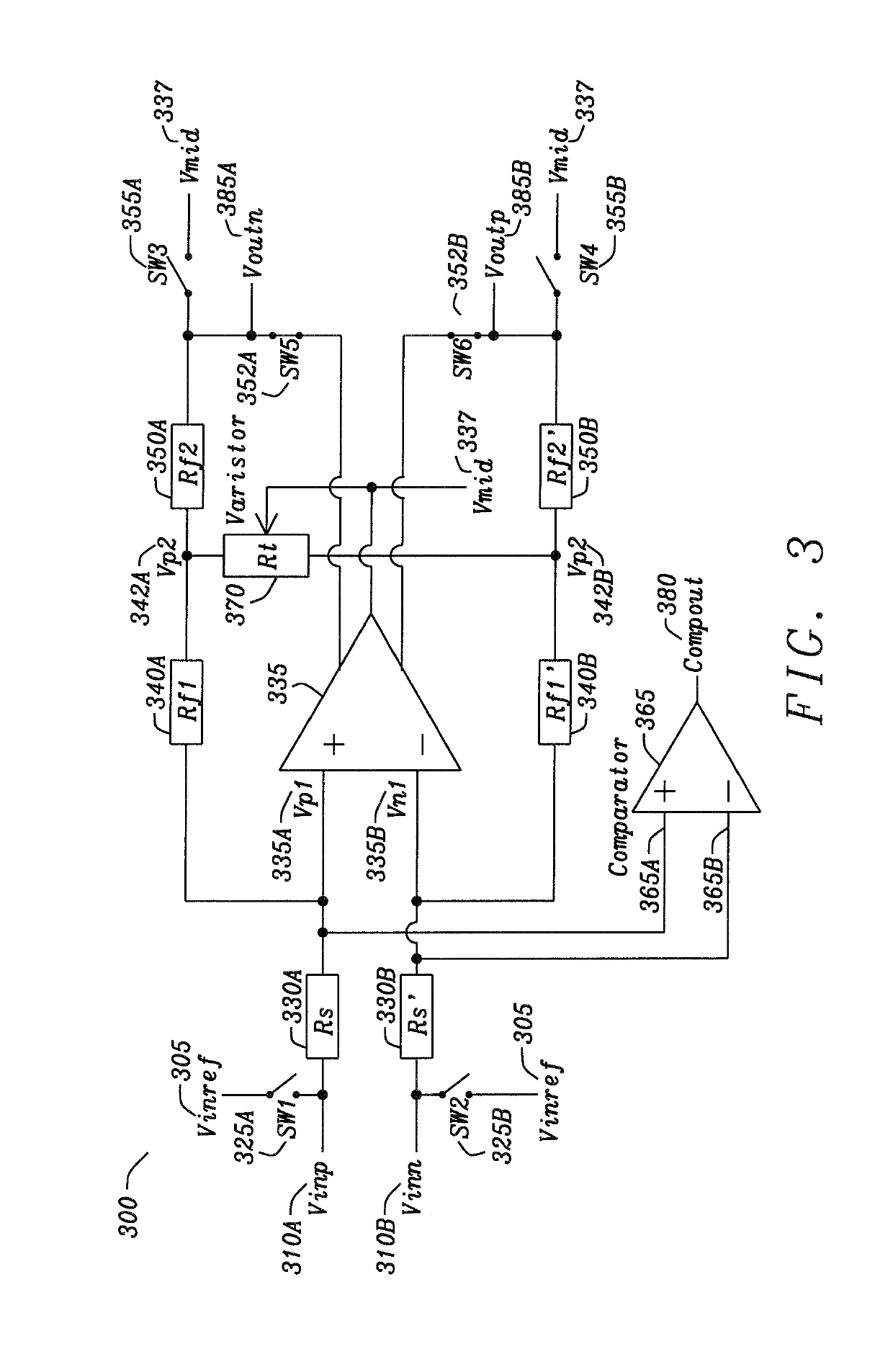Circuit and method for a high common mode rejection amplifier by using a digitally controlled gain trim circuit
a gain trim and high common mode technology, applied in the field of differential amplifiers, can solve the problems of difficult implementation of input or output choppers, undesirable choppers, and inability to implement chopper networks, and achieve the effect of accurately matching the gain of both paths and high input common mode rejection
- Summary
- Abstract
- Description
- Claims
- Application Information
AI Technical Summary
Benefits of technology
Problems solved by technology
Method used
Image
Examples
first embodiment
[0030]FIG. 2 is an amplifier circuit in accordance with the disclosure. The purpose of the invention is to achieve a high input common mode rejection (which could be in the order of 120 dB or greater) by matching the gain of both sides of a differential amplifier as depicted in FIG. 2. FIG. 2 show a first realization of the amplifier and its gain trimming circuit, depicted with the switches in normal operation mode.FIG. 2 is an embodiment of the circuit 200 where the correction is performed by trimming the feedback path. FIG. 1 is an amplifier with gain trim network where the differential low offset amplifier is used as a comparator, and a simple comparator is then used to convert its output to a digital bit for gain trimming. The current switch positions are normal amplifier operation. If all switches are toggled, the circuit is in gain trim mode.
[0031]The inputs of the differential amplifier are Vinp 210A and Vinn 210B. To perform gain trimming the switches SW1225A and SW2225B are...
second embodiment
[0037]FIG. 3 is an amplifier circuit in accordance with the disclosure. FIG. 3 show a second realization of the amplifier and its gain trimming circuit, depicted with the switches in normal operation mode. FIG. 3 is an embodiment of the circuit where the correction is performed by trimming the feedback path. FIG. 3 is an amplifier with gain trim network separately where the differential amplifier is not used in the trim process. Current switch positions are normal amplifier operation. If all switches are toggled the circuit is in gain trim mode. The circuit 300 has inputs of the differential amplifier 335 are Vinp 310A and Vinn 310B. To perform gain trimming the switches SW1325A and SW2325B are toggled, causing following: (a) the inputs of the differential amplifier gain network to be tied to Vinref 305. The inputs have a series resistor Rs 330A and Rs' 330B. The differential amplifier 335 have input signals Vp1335A and Vn 335B. (b) the outputs of the differential amplifier gain net...
third embodiment
[0038]FIG. 4 is an amplifier circuit in accordance with the disclosure. FIG. 4 shows a circuit 400 where the trim is performed in the input resistance path. FIG. 2 is an alternative circuit realisation, where gain trim is performed by a T-network in the input resistors to the amplifier. Current switch positions are normal amplifier operation. If all switches are toggled the circuit is in gain trim mode. To perform gain trimming the switches SW1425A and SW2425B are toggled, causing following: (a) the inputs of the differential amplifier gain network to be tied to Vinref 405. The inputs have a series resistor Rs1430A and Rs1′430B; these are followed by Rs2432A and Rs2′432B. The differential amplifier 435 have input signals Vp1435A and Vn 435B. (b) the outputs of the differential amplifier network 435 are be tied to switch SW5452A and switch SW6452B. A feedback resistor Rf 440A is coupled to Vp1435A and a second feedback resistor Rf′435B is coupled to signal Vn1435B. The resistor Rf 44...
PUM
 Login to View More
Login to View More Abstract
Description
Claims
Application Information
 Login to View More
Login to View More - R&D
- Intellectual Property
- Life Sciences
- Materials
- Tech Scout
- Unparalleled Data Quality
- Higher Quality Content
- 60% Fewer Hallucinations
Browse by: Latest US Patents, China's latest patents, Technical Efficacy Thesaurus, Application Domain, Technology Topic, Popular Technical Reports.
© 2025 PatSnap. All rights reserved.Legal|Privacy policy|Modern Slavery Act Transparency Statement|Sitemap|About US| Contact US: help@patsnap.com



